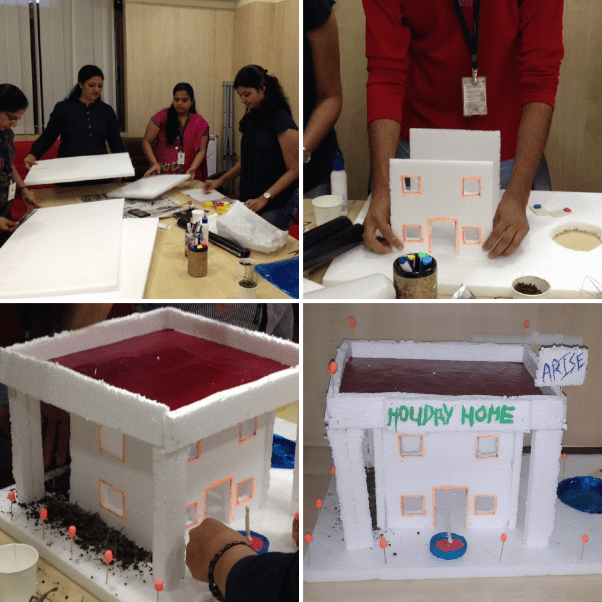Innovation Games: An Online Guide
By Team Arrk |
|
5 mins read |

The importance of marketing to the success of a business should never be underestimated. Marketers have a unique position in that they are talking directly to consumers and gaining insights that help create discussion and trail-blaze new solutions that can guide a company’s future.
Take for example, the case of Nokia and Apple. Long before the iPhone was launched, Nokia boasted its own touchscreen prototype. However, it was only able to ascertain three per cent market share; while Apple leapfrogged its competitor and never looked back thanks in large to innovative leadership from its marketing department that saw the company quickly establish what its audience would value and capitalise on this feedback.
Now an opportunity has arrived to source this vital information in a new, arguably much more interesting and fun way both for the company and the consumer: in the form of innovation games.
What are innovation games?
Innovation games were created by Luke Hohmann and represent a new form of primary market research.
The idea is that customers play games as a new way of generating feedback in regards to a service or product. Most of the games are designed to respond to specific questions but rather than getting the same result each time with a traditional business process, it instead gets different results every time and opens up new possibilities and creates room for creativity.
How do the innovation games work?
Each game is structured with a facilitator used to lead a group through a game: while still providing room for freedom and creativity. The idea is to prioritise features, options and possibilities with serious games that help to address a host of management issues and product strategies across the entire lifecycle of the product. In addition to market research and product design, they are meant to be useful with portfolio and project management as well as the formation of new ideas, agreements, problem solving, planning and forming a deep understanding.
The different types of innovation games
There are 13 distinct innovation games – although there are a host of different combinations of these games that can be made by merging or dividing certain aspects of each game. Broadly however, the 13 games are:
- 20/20 Vision: Product features are placed on to different cards with one feature on each card. The facilitator places one card on to the wall and then displays each remaining card one at a time – asking the participants if the feature on the latest card is of higher importance than the feature that is shown on the wall. It is not permitted to allow two features to be ranked with equal importance.
- Buy a feature: In this game, participants are presented with a list of potential product features and costs. Each participant will “buy” a feature that is deemed desirable: with participants also able to pool their fictional cash in order to buy some more expensive features if they can’t afford them with individual funds.
- Give them a hot tub: Potential product features appear on shuffled cards – one feature per card. Some of the features should be ridiculous: and observers should note the reactions they get when a customer sees one of these features to see what is really needed.
- Me and my shadow: In this case, the participants are recorded using the product with observers watching for actions, comments and suggestions. The observer should ask questions including: “why are you doing that?”
- My worst nightmare: Allows you to discover worst case scenarios and develop your planning and understanding. Participants draw caricatures of their worst nightmare related to the service or product.
- Product box: Here, the participants are told to imagine they are selling the vendor’s product at a trade show – they use glue, paint, crayons and other scraps to decorate a cardboard box and design a product box they would buy.
- Prune the product tree: In this case a large tree is drawn with thick limbs representing major functionality areas; while the edge of the tree includes the features of the latest product version. Each participant will write features on to index cards shaped like leaves and place them on to the tree – showing which product features are most important.
- Remember the future: During this game, participants are told to think about a future in which they have been using the product continuously over a long period. They are asked to think about what the product will have done to make them safe, successful, happy, etc. This helps establish their definition of success.
- Show and tell: In this case, participants bring in artefacts modified or created by the service and explain their importance.
- Speed boat: Here, a boat is drawn with anchors preventing it from moving. The anchors should be features that the customers don’t like – with the lower the anchor, the more debilitating the feature is deemed to be.
- Spider web: Within this game, a product name is drawn in the middle with participants drawing other services and products and explaining how and when they are used. Lines are used to link the services to each other.
- Start your day: In this task, participants outline their product use – whether that is daily, monthly, weekly or yearly. Descriptions are written on calendars with participants showing their use over the lifecycle of the product including difficult days when it seems like everything is against you.
- The Apprentice: Finally, with this game a product developer or engineer uses the product with comments and suggestions recorded.
Do the innovation games work?
Taking the concept of group brainstorming to a new level, it is believed that with innovation games there is a chance to bring new ideas to the forefront while simultaneously showing how to put them into action.
They may just find the answers you’ve been looking for… and answers to some questions you’d never even thought of… so why not give them a try for your organisation?








